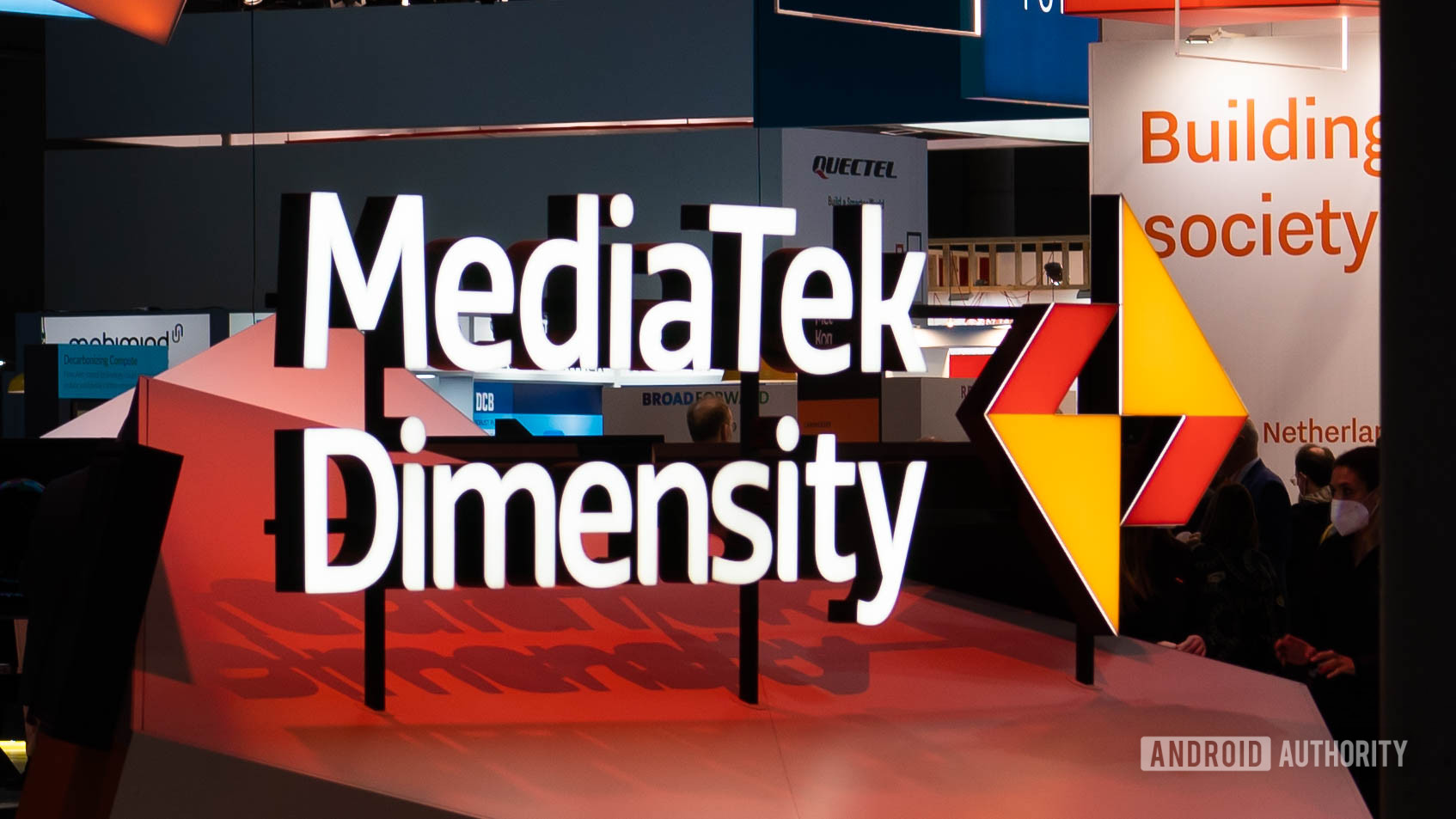Affiliate links on Android Authority may earn us a commission. Learn more.
Mid-range phones will get generative AI thanks to this new chipset

- MediaTek has announced the Dimensity 8300 smartphone chipset.
- This is the first mid-range smartphone chip touting on-device generative AI support.
Qualcomm and MediaTek have both announced flagship smartphone processors with support for generative AI features. But we didn’t have to wait long for this capability to come to the mid-range segment.
MediaTek just announced the Dimensity 8300, and it’s the first mid-range smartphone chipset touting on-device generative AI support. The Taiwanese company says the chip’s APU 780 AI silicon supports large language models (LLMs) with up to 10 billion parameters.
One big question is the token rate, or speed, as MediaTek didn’t disclose this detail. Generally speaking, 15 to 20 tokens per second is considered fast enough for conversational responses from large language models. By comparison, the flagship tier Dimensity 9300 supports up to 33 billion parameters at three to four tokens per second or a seven billion parameter model at 20 tokens per second. Meanwhile, the Snapdragon 8 Gen 3 supports a ten billion parameter model at 15 tokens per second.
| Dimensity 8300 | |
|---|---|
CPU Config | 1x Cortex-A715 @ 3.35GHz 3x Cortex-A715 @ 3GHz 4x Cortex-A510 2.2GHz |
GPU | Arm Mali-G615 6-core |
Caches | 4MB L3 4MB system-level cache |
AI | APU 780 Up to 10bn parameter LLMs Stable Diffusion image generation |
RAM support | LPDDR5X @ 8533Mbps |
Storage | UFS 4.0 with MCQ |
4G/5G Modem | LTE/5G (integrated) Sub-6GHz 5.17Gbps down |
Other networking | Bluetooth 5.4 Wi-Fi 6E |
Process | TSMC 4nm |
The Dimensity 8300 also supports Stable Diffusion image generation. MediaTek didn’t disclose the speed here, either. But we hope users don’t have to wait tens of seconds for an image to be generated. For what it’s worth, Qualcomm and MediaTek claim that their flagship SoCs can deliver Stable Diffusion image generation in under a second.
The firm’s new chipset also brings support for LPDDR5X RAM at up to 8,533Mbps, with MediaTek noting that it needed faster RAM to run LLMs.
Dimensity 8300: A powerful mid-range upgrade
Don’t care about generative AI capabilities? Then you’ll be pleased to know that the rest of the Dimensity 8300 is looking pretty solid, being built on a second-generation TSMC 4nm process.
MediaTek’s new mid-range chipset brings a triple-tier CPU, featuring one Cortex-A715 clocked at 3.35GHz, three Cortex-A715 cores clocked at 3GHz, and four Cortex-A510 cores clocked at 2.2GHz. The company adds that the CPU sees a 20% performance boost over the Dimensity 8200, and an efficiency boost of up to 30%.
The new Dimensity 8300’s GPU has seen a bigger upgrade, with the Mali-G615 MC6 GPU offering a claimed 60% performance boost and a significant 55% efficiency gain. So budget-conscious gamers should keep an eye on cheap phones running this chip.
What else is worth knowing?
MediaTek’s new chipset also packs so-called “adaptive gaming technology.” The company’s Yen-Chi Lee noted that this means an app/game is able to “talk” to the chipset to understand thermal load, with the app then being able to make adjustments accordingly. The company says this approach can reduce power consumption by as much as 14%.
The Dimensity 8300 also brings a couple of camera-related improvements, such as 4K/60fps HDR video (in lieu of its predecessor’s 4K/60fps SDR video), more power-efficient video recording in general, and AI-Color functionality. The latter sees image segmentation being used for more granular color adjustments in a scene. But those expecting 8K recording and other huge camera additions might be disappointed.
Other notable features include AV1 decoding, Bluetooth 5.4, Wi-Fi 6E, and support for refresh rates of up to 120Hz at WQHD+ resolutions (or 180Hz at FHD+).
MediaTek says the first phones with the Dimensity 8300 will be launched before the end of the year. There’s no word on specific markets for these handsets just yet.